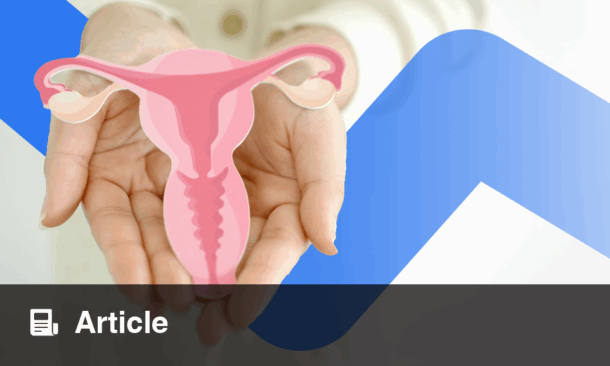Author: Layla Southcombe, Editorial Assistant, EMJ
Citation: EMJ Oncol. 2020;8[1]:22-25.
TRANSFORMATIVE is a term that appropriately describes the striking developments made in the oncology field in recent years. Yet again the agile field has needed to evolve in the face of new challenges, but the challenge this time was to ensure that patients are cared for during the ongoing coronavirus disease (COVID-19) pandemic. Over two ‘SARS-CoV-2 and cancer’ proffered paper sessions at the European Society of Medical Oncology (ESMO) Virtual Congress 2020, oncology experts came together to discuss how the COVID-19 pandemic has affected the delivery of cancer care, the well-being of cancer patients and healthcare professionals, and the risk factors for mortality in this uniquely susceptible group.
TREATMENT MODIFICATIONS
Lockdown restrictions and the general concerted effort to reduce face-to-face interactions to mitigate the spread of severe acute respiratory syndrome coronavirus 2 (SARS-CoV-2), the virus responsible for COVID-19, have resulted in major changes to how the care for cancer patients is delivered. The initiation of changes, such as new management plans and telehealth services, has facilitated the continuation of treatment, but what impact has this had on the cancer patients and the caregivers involved?
Prof Florence Joly, Centre François Baclesse, Caen, France, presented data from COVIPACT, an ongoing longitudinal study investigating the impact of the pandemic on the management of cancer and the psycho-emotional well-being of patients and care providers in an outpatient setting.1 Approximately 25% of the patients in the study experienced modifications to their cancer treatments, irrespective of metastatic/localised status, with most seen in patients with lung or head and neck cancers. The types of modifications comprised adapted monitoring through phone and video consultation, postponement or halting of treatment, and alteration to the rhythm of treatment. When breaking the patients down into the type of treatment they were receiving, the researchers found that the biggest disruption in treatment was seen in patients on immunotherapy, of whom 49% experienced modifications: 18% of patients had interruptions, 38% postponed, and 38% modified treatment rhythm. The least modifications to treatment were seen in patients on chemotherapy (18%), most of which were due to changes in consultation.
Racial Disparities
Studies have shown that individuals belonging to ethnic minority groups have been disproportionately affected by the pandemic, particularly with regard to morbidity and mortality, when compared to the general population. Dr Deborah Doroshow, Icahn School of Medicine at Mount Sinai, New York City, New York, USA, presented data from CCOS, a study that analysed the disparities in cancer during the COVID-19 pandemic.2 From March 2020, 40.6% of the patients in the study experienced a decrease in all visits, 51.6% experienced a decrease in in-person visits, and 32.3% experienced an increase in telehealth visits. Notably, when adjusted for cancer centre, cancer status/type, and receipt of systemic therapy, patients of Black and Hispanic heritage were less likely to have increased telehealth visits when compared to those who were White. When asked about the differences in telehealth seen between ethnicities, Dr Doroshow noted that barriers such as those relating to language and access to technology could play a significant role. “If we want to adopt telehealth, which can be a really transformative technology to keep patients safe, we really need to think about what the barriers are to universal adoption of telehealth and target those barriers to make sure that all patients can benefit,” she advised. Furthermore, there was a disproportionately high COVID-19 incidence among non-White cancer patients, and those of Hispanic background were more likely to have treatment delays than patients who were White. Overall, patients of minority ethnicities experienced a disproportionate burden of cancer disruptions, with Dr Doroshow concluding that interventions to narrow these disparities are warranted.
PATIENT AND HEALTHCARE PROFESSIONAL WELL-BEING
Living through a pandemic has universally been challenging and adding a serious disease like cancer into the situation makes it harder, potentially impacting quality of life. In the COVIPACT study, the stress, sleep quality, and cognition of patients receiving outpatient cancer care in a French hospital were measured through a survey during the French lockdown period from 8th April to 29th May (n=621). More than one-half of the patients reported stress related to the event, which was more often reported in patients who had modifications to their treatment.
Stress, scale of professional exhaustion, and feeling of personal efficiency of the healthcare professionals in the outpatient departments were also assessed through a survey during this time period (n=73). High levels of perceived stress were reported; however, high levels of professional accomplishment and personal efficacy were also reported. When comparing the two groups, there was a higher level of perceived stress among caregivers than among patients.
Dr Susana Banerjee, The Royal Marsden NHS Foundation Trust and The Institute of Cancer Research, London, UK, also presented data on the impact of COVID-19 on oncology professionals, from a survey by the ESMO resilience task force.3 Answers were received from 1,520 professionals across 101 countries and were compared to the COVID-19 mortality rate of the individuals’ country at that time. Summarising the results, Prof Banerjee said: “As mortality rate increases, COVID-19 job performance decreases and the well-being index scores increased, which suggest higher distress and poorer well-being.” Burnout was not associated with the country’s mortality rate. More than 25% of survey respondents had a well-being index that suggested risk of distress, with analysis of the demographics showing that they were more likely to be female or under the age of 40 years. When repeated 3 months later, the survey results showed that the proportion of individuals at risk of distress increased from 25% to 33% and self-reported burnout increased from 38% to 49%; however, job performance had also increased, from 34% to 51%. Having access to counselling and psychological support, workshops/courses on well-being, and burnout and coping strategies were noted as being helpful resources to have going forward, but 86% felt that having flexible hours, including working from home, would be extremely to moderately helpful in improving well-being.
MORTALITY RISK FACTORS
Dr Trisha Wise-Draper, University of Cincinnati, Cincinnati, Ohio, USA, opened her session by explaining that patients with cancer who contract COVID-19 experience higher rates of
hospitalisation (40%), severe respiratory illness (20%), and mortality (9–30%) when compared to the general population, highlighting the need to identify the risk factors associated with these complications. The study Dr Wise-Draper presented analysed data from the COVID-19 & Cancer Consortium (CCC19) registry and included 3,654 patient cases (28% being treated with curative intent and 44% for non-curative). The types of treatment given to cancer patients prior to their COVID-19 diagnosis were analysed, along with when they were given (<2 weeks, 2–4 weeks, 1–3 months, and 3–12 months prior to COVID-19 diagnosis).4 The most common treatment combinations given prior to COVID-19 diagnosis were cytotoxic chemotherapy and targeted therapy.
The highest mortality rates were seen in individuals with active cancer versus those in remission (22% versus 6%, respectively), with the highest in those with progressive cancer (34%). Interestingly, high rates of COVID-19 complications were seen in people with cancer, including hospitalisation, supplemental oxygen requirement, intensive care unit admission, mechanical ventilation, and death, whether or not they had been receiving cancer treatment or were in remission and had not been receiving treatment.
When investigating the treatment type and 30-day mortality, those on chemotherapy and immunotherapy combination had the highest mortality rate, regardless of time of administration before COVID-19 diagnosis. Those who had received targeted therapy 1–3 and 3–12 months before COVID-19 diagnosis also had a high risk of mortality. Those who received anti-CD20 at 1–3 months prior to COVID-19 diagnosis showed a striking mortality rate of 47%, which Dr Wise-Draper speculated to be a possible result of the B-cell depletion normally seen at this time period post anti-CD20 administration. Overall, 30-day mortality was highest in those who received cancer treatment 1–3 months prior to COVID-19 diagnosis (28% all-cause mortality).
SUMMARY
Knowing the factors that put cancer patients at risk of severe COVID-19 will equip physicians to make educated decisions on treatment plans, thus mitigating increased risk of morbidity and mortality. The results from the studies into racial disparities in receipt of treatment and the well-being of cancer patients and healthcare professionals have highlighted unmet needs that, when met, can aid the improvement of the delivery of care to patients with cancer during the COVID-19 pandemic and post-COVID-19 era.








